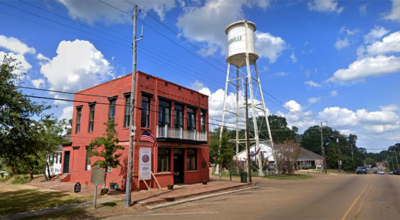Missing for two years, thousands of missing artifacts discovered, returned to Mississippi museum
Published 6:27 am Saturday, December 19, 2020
They’re back. Or at least most of them are.
Thousands of artifacts missing from the Museum of the Mississippi Delta’s most prized archeological collection have been returned.
The largest recovery occurred Thursday when two officials from the Mississippi Department of Archives and History returned 37 boxes of artifacts — stone tools, pottery pieces, petrified wood and the like — that had been deposited at the Jackson facility two years ago without authorization.
Most of the returned items are from the L.B. Jones Collection, a highly regarded compendium of prehistoric artifacts that has been on loan to the museum for decades.
“This is a good day for our Delta prehistoric heritage and a great day for the L.B. Jones Trust,” said Anna Reginelli, the curator of the collection.
Reginelli and the trust’s chairman, Donnie Gayle Lay of Brandon, had been working for more than a year to get the scads of material back from MDAH after learning that Cheryl Thornhill, the Greenwood museum’s former executive director, had given them and other stored artifacts away without the trust’s permission or supporting documentation.
The controversy about Thornhill’s handling of the archaeological collections on loan to the museum prompted her to resign in February.
For months, according to Meg Cook, the director of archaeology collections at MDAH, it could not put its hands on the artifacts that the Jones trust insisted had come into the state agency’s possession. Reginelli had made two trips to Jackson to recover some of the artifacts but knew from her research that there had to be a lot more there. One complication, according to Cook, was that the MDAH employee who accepted the material from Thornhill, then chief archaeologist John Underwood, was no longer with the agency.
In November, though, the dozens of boxes of material were found, Cook said, in an MDAH building that is not used for collection storage by its Museum Division, which manages the state’s archaeology collection.
That began the process that ultimately resulted in Thursday’s return.
“I’m just happy to be able to give this stuff back,” said Cook. “Certainly it was a complete fluke that we came across it anyway.”
The L.B. Jones Collection consists of more than 30,000 artifacts that Jones, a highly regarded amateur archaeologist who lived in Minter City, had collected. The material, spanning from about 10,000 B.C. to 1750 A.D., came from dozens of excavations Jones had conducted or financed, from ground surface examinations and from purchases he made. Following his death in 1995, Jones’ second wife, Frances Simpson Jones, established the charitable trust to preserve the collection and named the Museum of the Mississippi Delta as the designated repository. The trust is managed by a three-person group, with Lay, a second cousin of L.B. Jones, as its chairman.
Lay was not on hand for Thursday’s transfer, but John Pittman, another trustee, was.
“The recovery process, it’s taken a considerable amount of time, but it’s gone well, and we’re very pleased to have these items back in their home,” said Pittman, a retired Greenwood banker and former president of the museum’s board.
Cook said that MDAH found some Native American human remains mixed among the artifacts. At the Jones trust’s request, MDAH retained these and now will be responsible, under a federal law, of returning the human remains to lineal descendants or culturally affiliated Indian tribes.
“We wanted them repatriated appropriately,” Pittman said.
Cook said MDAH was also legally and ethically obligated to keep two “banker’s-size boxes” of artifacts that it believes Jones collected from federally owned property. One site in question was at Grenada Lake, the other at Walker Lake near Holly Springs. She said the trust will have to work with the two responsible government entities, the U.S. Army Corps of Engineers and the U.S. Forest Service, to try to reclaim possession of that material.
“I’m sure there’ll be a positive outcome there,” Cook said.
In the meantime, Reginelli and Katie Mills, who took Thornhill’s place as the museum’s executive director, will begin the painstaking process of going through the 37 boxes and cataloguing each artifact. Other artifacts that had been obtained by Mississippi State University and the University of Mississippi were returned to the trust earlier this year.
Reginelli estimated that it will take months to complete the inventory.
The L.B. Jones Collection is expected to be a major focus for a planned renovation of the Greenwood museum’s archaeology room.
That work is being funded in large part by a $24,500 grant from the Mississippi Delta National Heritage area. The Cobb Institute of Archaeology at Mississippi State is lined up to help with the project.
The upgrade, according to Mills, will be designed to make what’s on display more intelligible to the average visitor to the
museum “so people like me and you who aren’t experts on archaeology will know what we’re looking at when we walk in the room,” she said.
The museum had initially hoped to complete the project by the end of this year, but the ongoing COVID-19 pandemic has waylaid that timetable. The museum has been closed to the public since mid-November after its longtime business manager, Dave Freeman, contracted the virus that claimed his life on Dec. 1.
Mills said the museum will re-evaluate the situation with the pandemic after the first of the year. The earliest now that she expects the renovation to begin in earnest is February.
“We want to make sure everybody’s healthy and safe,” she said.






